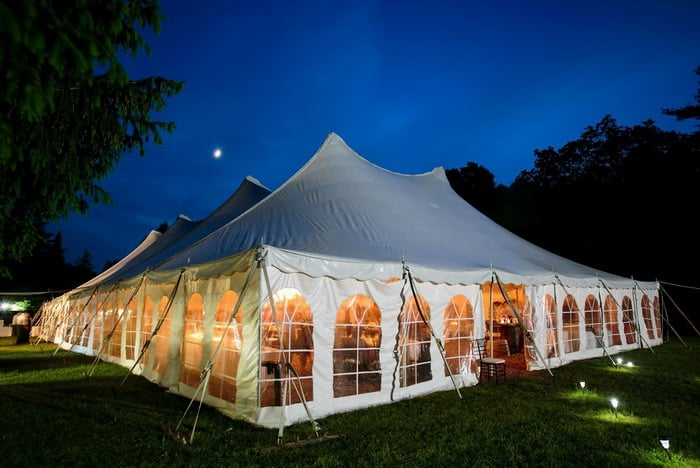Unveiling The Uses And Benefits Of Fabric Shelters: A Sustainable Solution

Fabric shelters, increasingly prevalent in an era emphasizing sustainability, are a testament to innovative architectural solutions meeting ecological consciousness. These versatile structures extend far beyond basic utility; they champion the cause of environmental preservation.
The introduction of insulated fabric shelters, in particular, has transformed perspectives on temporary structures, melding efficiency with ecological responsibility and fostering sustainable advancements across various sectors.
Dive into this article to uncover fabric shelters’ multifaceted uses and benefits and understand the reasons behind their soaring popularity.
Uses Of Fabric Shelters
Fabric shelters serve more than just a singular purpose. Their versatility and adaptability make them ideal for a range of functions across the following sectors:
1. Event Hosting And Outdoor Celebrations
Fabric shelters serve as ideal venues for event hosting and outdoor celebrations. Their adaptable nature ensures they can accommodate varying crowds, from intimate gatherings to large-scale events. Whether it’s a wedding reception, a company outdoor meeting, or a community fair, fabric shelters provide a suitable environment.
Moreover, they come in various designs, allowing customization based on the theme or purpose of the event. The versatility in design ensures that the ambiance matches the event’s mood, making it a memorable experience for all attendees.
2. Temporary Storage Solutions
Do you need a place to store equipment, inventory, or agricultural products temporarily? Fabric shelters come to the rescue. Their spacious interiors offer ample storage space, making them a go-to for businesses and farmers.
Furthermore, their protective nature ensures that the stored items remain safe from environmental factors. Whether it’s rain, sun, or wind, these shelters guarantee that the stored goods remain pristine, avoiding potential financial losses.
3. Workshops And Operational Hubs

Military sheelters made of sustainable and eco-friendly fabrics, image source: Adobe
Many industries have started using fabric shelters as temporary workshops or operation hubs. They provide a conducive environment, especially in fields that require mobility, like construction or research.
The ease of installation ensures you can set up an operational base in record time. Moreover, their insulated nature offers comfort, allowing workers to concentrate on tasks without being affected by external weather conditions.
4. Emergency And Relief Centers
In times of crises, be it a natural disaster or other emergencies, fabric shelters serve as quick-to-deploy relief centers. Their rapid installation feature ensures that affected individuals receive shelter on time.
Additionally, their durable nature ensures they stand firm against harsh conditions, providing a haven. Relief organizations and governments often utilize them as medical centers, distribution hubs, or temporary housing solutions.
5. Sports And Recreational Activities
Many sports enthusiasts and organizations now look to fabric shelters for their needs. Offering protection against unpredictable weather, these shelters ensure that sports activities, like tennis or basketball, aren’t hampered by rain or sun. Additionally, they provide an opportunity for year-round play, making them a favorite among recreational centers.
6. Exhibition And Trade Show Venues
Exhibitions and trade shows require expansive spaces that can be tailored according to specific requirements. Fabric shelters, with their adjustable interiors, are perfect for this. Organizers can efficiently design unique booth setups, and the spacious design ensures comfortable visitor movement, enhancing the overall experience.
Benefits Of Fabric Shelters
Embracing fabric shelters is not only about meeting immediate needs; it’s also about reaping long-term advantages. From eco-friendliness to cost savings, these shelters promise the following benefits that cater to modern-day requirements:
1. Eco-Friendly And Sustainable
Adopting fabric shelters is a step towards a greener world. They use recyclable materials, which drastically reduce waste. By being lightweight, their manufacturing and transportation consume less energy, promoting an eco-friendly ethos.
Moreover, using natural light in many fabric shelters reduces reliance on artificial lighting. It doesn’t only cut down on energy consumption and offers a more natural ambiance, which users often prefer.
2. Cost Efficient And Economically Viable
Compared to their traditional counterparts, fabric shelters present an economical solution. The reduced need for extensive materials, labor, and construction time translates to cost savings.
The long-term benefits also shine through. Minimal maintenance requirements ensure that ongoing costs are kept at bay. This combination of initial and long-term savings makes fabric shelters a financially wise choice.
3. Adaptable And Versatile
The adaptability of fabric shelters is unmatched. Their modular nature allows for quick resizing, ensuring optimal space utilization. Whether you need to scale up or down, these shelters can easily accommodate you.
The various designs and customizable options ensure the shelter aligns with the intended purpose. Whether it’s a classy design for an event or a more functional one for storage, there’s a fabric shelter for every need.
4. Enhances Productivity And Efficiency
The benefits of fabric shelters aren’t limited to their physical attributes. As previously mentioned, they have an indirect positive impact on productivity. By offering a comfortable and safe environment, workers and users can focus better on their tasks.
Natural lighting often results in a more positive mood and better work output. Couple that with the comfort of insulation, and you have an environment that fosters efficiency and productivity.
5. Weather Resilient
Resilience to diverse weather conditions is paramount when selecting shelters or temporary structures. It’s worth stressing that fabric shelters have been meticulously designed to withstand various climatic challenges.
From scorching heat waves to freezing snowstorms, these structures remain unyielding. The material used in their construction is robust and engineered to offer maximum protection. It means that irrespective of what nature throws their way, they remain steadfast, ensuring their interiors remain as hospitable as ever.
6. Mobile and Portable
In an age where adaptability is key, structures that cater to this need are highly sought after. Enter fabric shelters. Their unique design makes them easily disassembled, making transportation to a new location straightforward. Once at the destination, reassembly is just as hassle-free. This unparalleled portability ensures that your shelter can come along wherever you need to be.
Conclusion
Fabric shelters stand as symbols of modern-day innovation that embraces sustainability. Their myriad uses and undeniable benefits make them an excellent choice for diverse needs. By opting for such structures, you ensure efficiency and flexibility and champion a greener, more sustainable future. Their adaptability to different settings, cost-effectiveness, and low environmental footprint amplifies their appeal, solidifying their place in tomorrow’s world of conscious choices and sustainable living.







